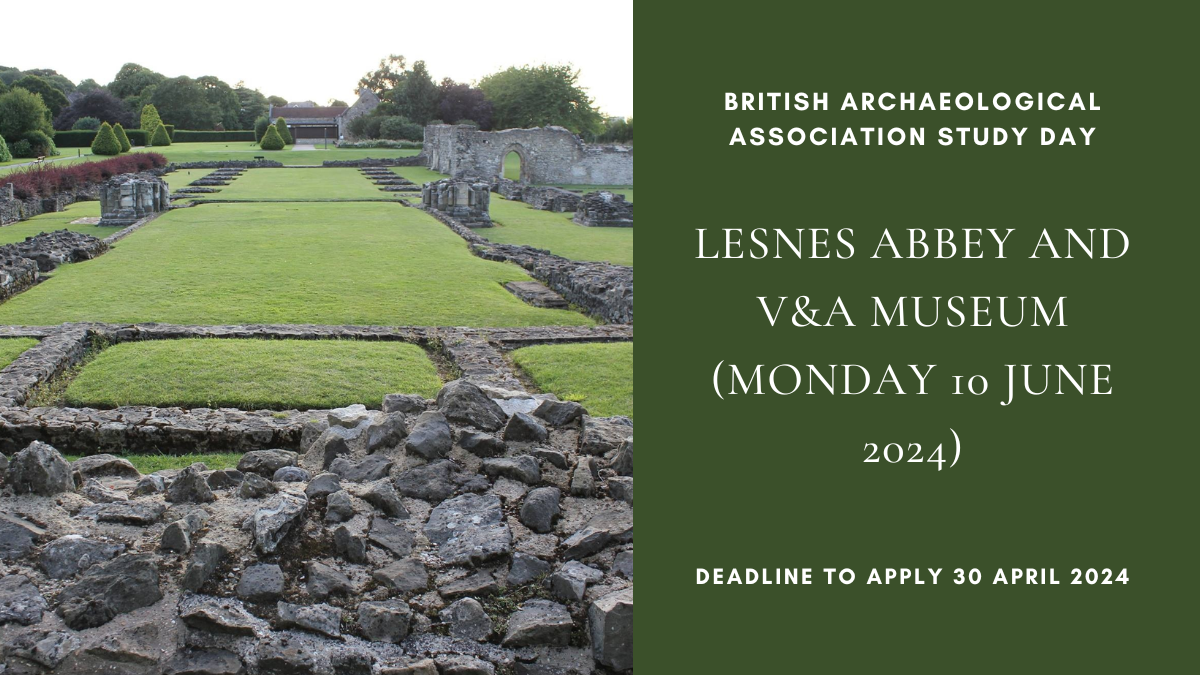Lesnes Abbey was founded by Henry II’s chief justiciar, Richard de Lucy, in 1178. De Lucy retired into it, died there in 1179 and was buried in the chapter house. The de Lucy family continued to patronise the abbey, and it served as their burial house. The abbey was dedicated to St Thomas Becket. Thus the foundation reflects unease about – and appropriation of – the martyrdom of Thomas Becket in Angevin court circles. The magnificent surviving Missal from the abbey, now in the V&A, produced around 1200, reflects both de Lucy family patronage and their interest in Thomas Becket.
The Missal is illuminated, contains liturgies for Becket, musical notation, and obits for members of the de Lucy family. Richard de Lucy appears to have chosen an unusual order for his abbey: Arrouaisian canons, from north-eastern France. The abbey itself is mainly reduced to footings, but is nonetheless an important and revealing site, in an evocative position above what must have been marshlands in the Thames estuary.
The study day will take place in two parts. In the morning, we will visit the site of the abbey to discuss the archaeological remains. Discussion of the site will be led by Richard Halsey and Dr David Robinson, and by Dr Hugh Doherty on the de Lucy patronage. In the afternoon, the study day will move to the V&A, where we will be able to see the Lesnes Missal, which will be taken out of its display case for us to see it properly. Discussion of the Missal will be led by Dr Rowan Watson and Dr Catherine Yvard. The V&A also holds a fine tomb of a later member of the de Lucy, c. 1300. This will be presented to the Study Day by Dr Michaela Zoschg.
Lesnes provides an unusual opportunity to consider the architecture, liturgy, and spatial configuration of a house of Augustinian canons, of an unusual and ascetic branch, founded as a result of well- documented high level court patronage, with a strongly political tinge.
Study Day Programme
- 10.30: Meet at Lesnes Abbey Visitor Centre/ Café for on-site discussion approx. 2 hours
- 12.30- 1.30: Lunch Break (Lunch will not be provided so we suggest you arrive with your own packed lunch. The Abbey has a small kiosk cafe selling limited but nice range of sandwiches, cakes and coffee/tea.)
- 1.30: We suggest you make your way to the Victoria & Albert Museum by taking the Elizabeth Line from Abbey Wood Station (see travel options below)
- 3.00: Reconvene at V&A Museum (We will gather in the main entrance hall at Cromwell Road and divide into two groups. Group A to see the Lesnes Missal and Group B to see the tomb.
- 3:00 – 3:45: for session 1, then allow 15 minutes for the swap and then 4:00 – 4:45 for session 2)
- 4.45: End
Travel and practicalities:
Lesnes Abbey is about 10 minutes’ walk from Abbey Wood Station. Abbey Wood Station (the station itself is shortlisted for this year’s Stirling Prize) is the east end of the Elizabeth line. It is also served by trains from London Bridge, including some Thameslink trains via St Pancras. Lesnes Abbey and its park are well signposted from the station.
Travel from Lesnes Abbey to the V&A: We are allowing plenty of time for this. There are several options, including: Elizabeth line to Paddington, then tube to South Kensington; or train to London Bridge, then via Jubilee and circle/district line to South Kensington; or train to Blackfriars, then circle/district line to South Kensington.
The cost of the day will be £25 for members. The event is free for students, for whom travel grants (to a maximum of £50) are also available.
Places are limited to 20, of which up to 10 are reserved for students.
To apply, please e-mail studydays@thebaa.org – by 30th April 2024. Please state in the email whether you are a member of the BAA or a student. All names will be entered into a ballot for the study day and the successful applicants will be notified by 2nd May 2024.
